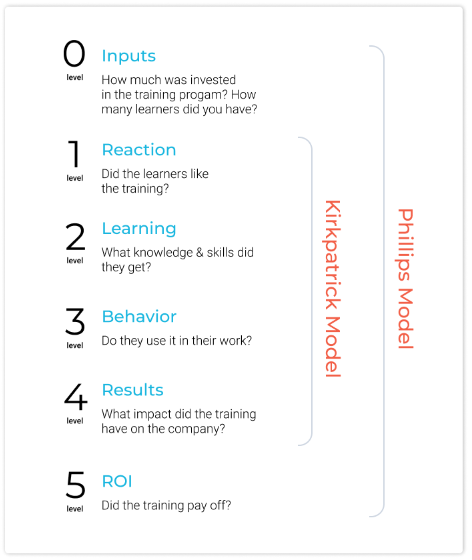LMS Tracking: How to Track Key LMS Metrics
“If you can’t measure it, you can’t improve it,” states management expert Peter Ducker. This emphasizes the importance of choosing the right metrics to measure your learner’s progress. The right LMS could be an invaluable tool to evaluate whether your learners benefit from the course.
The only way to measure this is to understand the different aspects that come into play in LMS tracking! So, whether you are scouring the internet to find the right LMS or want to ensure that your LMS meets your organizational goals, this blog is just for you!
Here’s what you’ll learn:
- What are the Key LMS Metrics to track?
- How to Track Key LMS Metrics?
- How to Identify the Right Metrics for Your LMS?
- Benefits of LMS Tracking
- Best Practices for LMS Tracking & Reporting
What are the Key LMS Metrics for LMS Tracking and Reporting?
Every business leverages a unique business model and has diverse business requirements. There’s an LMS that caters to every business! Although the LMS metrics to monitor differ for every business, a few critical ones are hard-lined!
1. Course Completion Rate and Progress
Course completion rate helps to assess the learners progress. Best LMS platforms reveal the pass or fail rate, the users who started, completed, and are in the middle of the course. Tracking your course completion rate helps you understand if a course is too easy or challenging and optimize it accordingly.
At a deeper level, it can also help you spot the module with maximum dropout. For instance, if there’s a module in your course with significant dropouts, it needs to be reworked.
How does it help?:
Find how the learners are progressing through the course; areas of improvement
Strategies to Improve Course Completion:
- Breakdown course content into digestible chunks of information
- Offer incentives to complete the course
- Use drip feeding to offer a structured framework for learning courses
- Gamify with elements like leaderboards, points and badges
2. User Engagement
While engagement is key seems to be a cliche, student engagement is essential for online learning. User engagement is how the user interacts and participates in the course. Research shows that engagement is directly linked to student performance. Moreover, it is also directly associated with retention, knowledge gain, and competence. Typically, this is gauged by the course completions, enrolled students, course ratings, the course completion time, etc.
How does it help?
Drives course completion rates and boosts the course revenue & sales.
Strategies to improve User Engagement:
- Explore different learning styles, instructional methods, and learning paths
- Create an inclusive and supportive online learning community.
- Integrate collaborative tools and platforms like Google classrooms, breakout rooms, live video-conferencing tools.
- Experiment with different assessment formats like quizzes, assignments, group projects, etc.
3. Assessment and Grades
A carefully crafted assessment can assess knowledge, skill gaps, or expertise. Popular assessment types include online quizzes, drag-and-drop activities, essay questions, and game-based learning activities. Assessments measure the course effectiveness, the comprehension and retention of its content.
That’s why Harasim, Hiltz, Teles, & Turoff stated that:
“For a learner-centered approach, assessments must be an essential part of the learning-teaching process, in-class embedded activities, and learner-teacher interactions.”
So, how do you evaluate if your LMS has the right kind of assessment?
The best way is to align them with your learning objectives. You need to identify the assessment type that best evaluates your learners. Choose an LMS that employs both qualitative and quantitative assessments.
How does it help?
Evaluate how far learners understand and retain the course content.
Strategies to improve assessments and grades:
- Incorporating assessments after each lesson module
- Exploring different assessment types based on your module
- Evaluating with real-time applications of the course
4. Enrollment
Course enrollment tracks the number of individuals and cohorts enrolling in the course. A higher course enrollment indicates an effective course. Conversely, a course that doesn’t catch steam needs to be reframed and improved.
So, what does a typical enrollment report look like? A detailed enrollment report includes the number of course enrollments, enrollment date, status, etc. Conversely, there could be several reasons for a low sign-up rate. Often, it’s low-quality course content. Secondly, the courses might be priced exorbitantly, or even your market strategy might need a rework.
How does it help?
Understanding enrollment trends helps identify popular courses, plan courses, and allocate resources.
Strategies to improve course enrollment:
- Plan course content that aligns with learning objectives and meets the audience’s expectations.
- Price the courses based on their offerings and market demand.
- Promote the courses on the right channels through emails and paid ads to capture maximum leads.
- Gather feedback from learners through questionnaires to understand the possible improvements.
5. ROI
Investing in an LMS is a serious business! The potential ROI from your courses or training sessions helps to weigh the profits and time you invest into the business. After all, money drives your business apart from its purpose. Isn’t it?
Now, let’s delve into the crux: How do we calculate ROI?
Return of Investment = (Return of Benefit – Investment Cost) / Investment Cost
Simply put, ROI is the revenue from selling courses or training divided by the overall investment cost. Ideally, a successful program offers profits more than its total investment.
However, determining the ROI of your LMS is not a one-factor method but rather a more elaborate process. The best known ROI model is Kickpatrick’s model that helps to measure the training effectiveness.
This model divides the entire process into four stages: Reaction, Learning, Behaviour and Results. Later, Philips refined the model by adding two additional levels. Here’s an infographics that clearly demonstrates the model

Multiple factors come into play for determining ROI are:
- Initial purchase, setup and hosting cost
- Data maintenance cost/ Cloud storage cost
- New revenue generation
- Employee Retention Rate
- Savings from travel expenses, instructor costs or resources
How does it help?
Knowing your ROI helps you understand your programs’ performance and make data-driven decisions.
Strategies to improve your ROI:
- Avoid LMS hopping — switching from one LMS to another, as it often incurs hidden costs.
- Automate specific aspects of your LMS like enrollment, reporting, progress tracking, etc.
- Leverage more detailed LMS reporting: course engagement, completion rates, assessment scores, etc.
- Integrate collaborative tools like discussion forums, social learning tools, etc.
6. Learner Satisfaction
“A satisfied customer is the best advertisement.” Obviously, course creators can’t completely evaluate their content, as their opinions would be biased. Learners are ideal critics for the same! An engaging poll, survey or questionnaire taken up by a learner could be a complete eye-opener!
User experience is pivotal and could either make or break the product! But, as satisfaction is an abstract paradigm, is it measurable?
Well, the best and most direct way to assess learner satisfaction rate is to ask the learners.
Here we list out some effective tools to get a sneak peek into the learner’s mindset:
- Course Ratings
- Surveys and Feedback forms
- Learner analytics and comprehensive dashboards
- Assessments and quizzes
- Net Promoter Score
- Gamification and badges
- Online communities
How does it help?
Guides course creators to develop content that meets the learner’s expectations and improve the overall user experience
7. Job Performance
Want to know whether your recent training has helped your sales team close bigger deals or perform better? A robust job performance metric could do that! Compare the pre-training and post-training results to understand whether the team has gained new knowledge or skills through the training.
The key employee performance metrics are quality, quantity, effectiveness, teamwork, and learning and development. Post-training, evaluate whether employees can apply their knowledge to their work.
How does it help?
Understand if your LMS addresses the team’s performance issues and improves productivity.
Strategies to improve job performance metrics:
- Conduct timely performance reviews to understand the impact of training
- Analyze employee’s productivity levels, quality standards and overall business results
- Conduct surveys to assess customer satisfaction
8. Learner Proficiency
Of course, the ultimate goal of any course is how far the learners have progressed. Quantitative and qualitative assessments help to gauge the level of proficiency. Pass/fail rates give a fair idea of how far learners have grasped the concept. For a deeper insight, look at the number of attempts to pass the test, the total time to finish the test, etc.
How does it help?
Assess the pre-training and post-training improvement
Strategies to improve learner proficiency
- Offer supplemental materials for a specific module to enhance learning
- Conduct learner proficiency spot-checks for each module
How to Track Key LMS Metrics?
Now, that’s a lot of LMS metrics and KPIs and it can become overwhelming if you are just getting started with LMS tracking.
Here’s a 6-point process to cut through the noise and streamline your LMS the right way:
1. Identify the Objective of Your LMS
Be it employee onboarding, partner training, or customer training, your LMS could serve a different set of objectives. So, first off, define clear, specific, and measurable objectives for your LMS. This offers a clear roadmap for LMS tracking. Compliance training, skill-based learning, and soft skill learning are the different LMS categories; identify your objective depending on where your LMS falls.
2. Determine the Relevant Metrics and KPI
To convert your learning objectives into a measurable-oriented environment, you must pick suitable metrics. Remember to choose the ones that are meaningful for your business. Job performance might be an essential metric for employee training, but lead generation would be indispensable for a sales program.
3. Leverage Analytic Tools to Collect the Quantitative Data
Tools like LMS, learning analytics, and data visualization tools help to aggregate data from multiple sources and offer valuable insights. While quantitative data offers insights into a learner’s performance, qualitative data captures a learner’s experiences and perceptions. Qualitative data through surveys and feedback explains the learner’s proficiency and satisfaction.
4. Tracking Progress Overtime
“Don’t theorize before you have data,” states Sherlock Holmes. Data analysis is an ongoing process. It provides valuable insights, higher efficiency, better decisions, explores trends and drives revenue!
Despite several benefits, only 18% of L&D teams claim to have in-house data analysis skills. Interpret your data using statistical and data visualization methods, such as graphs and charts. Find your strengths and weaknesses and work on them over time!
5. Gather Feedback from Stakeholders
Creating an effective training session or course is a team effort! Although “too many cooks spoil the broth, each stakeholder offers something new to the table.” Learners, SMEs, investors, and clients are the key stakeholders in an LMS. Figure out the right communication channels, like interviews, surveys, and discussion groups, to document their insights.
6. Optimize the LMS Tracking based on data-driven decisions.
Finally, it’s time to act and convert the feedback into actionable steps. Ideally, establish transparent communication with your stakeholders. Analyze the metrics to create personalized learning paths and refine the user experience. From the valuable insights, effectively allocate and manage budget and resources.
How to Differentiate between Vanity and Actionable Metrics?
According to Brandon Hall Group’s 2016 Survey, 60% of companies are not effective at measuring informal learning. Plus, 52% of them need improvement to measure experiential learning. So, how do we distinguish the metrics that truly matter?
Well, this brief comparison could help you to focus on what truly matters:
| Vanity Metrics | Actionable Metrics |
| Measurable metrics that don’t offer relevant insights on business growth and improvements. | Offers valuable insights on the overall learning strategy, user engagement and outcomes. |
| Doesn’t offer deep insight into your business. | Understand what’s working and what isn’t for your business |
| Futile for data-driven decisions | Helps to make data-driven decisions |
| Course completion, course views, module views,etc. | Time spent on each module, pass/fail rates,etc. |
In short, ignore the vanity metrics and embrace the actionable ones!
The Final Say
LMS is a huge investment for your business. To make this investment worthwhile, ensure the LMS tracking is based on the relevant metrics and KPIs. To start with, you must identify your business objectives and determine the metrics that align with them. Most importantly, choose metrics that are precise and actionable. That way, you decide if your learning strategy is impactful and elevates organizational performance!
FAQs-Related to LMS Tracking
1. What does LMS track?
The essential LMS tracking tools include key performance indicators and metrics. Course completion rates, user engagement, assessments & grades are a few elements that an LMS tracks.
2. What are LMS metrics?
LMS metrics or key performance indicators are the measures that help to assess an LMS performance and user activity.
3. How do you gauge the effectiveness of your LMS?
Choosing the right LMS for your business is essential. Consider how the LMS integrates KPIs and metrics such as user engagement, learner proficiency, and revenue to measure effectiveness.




